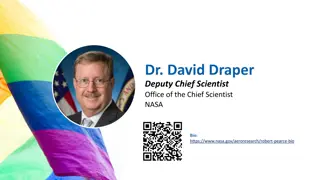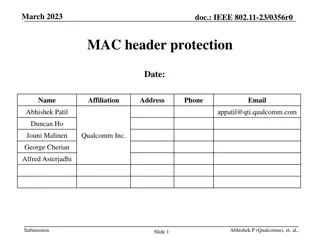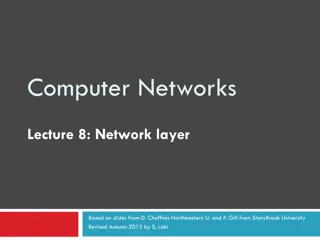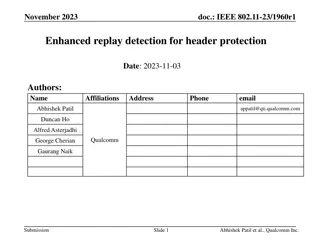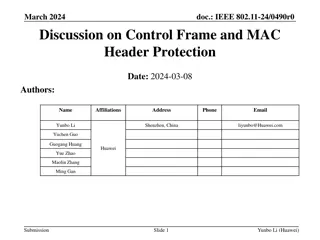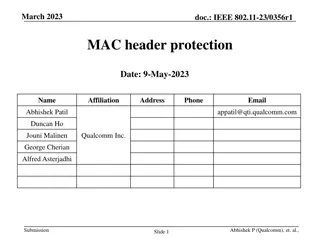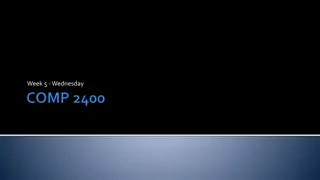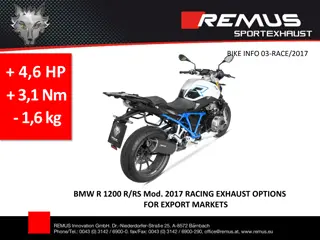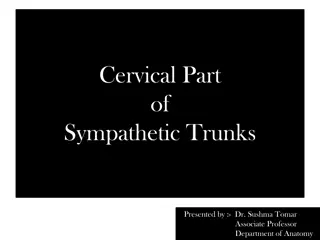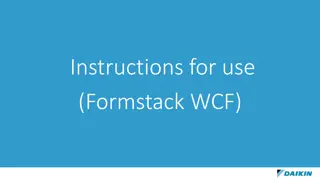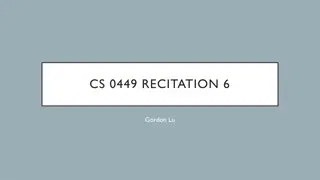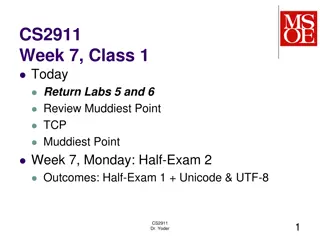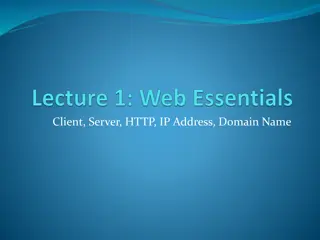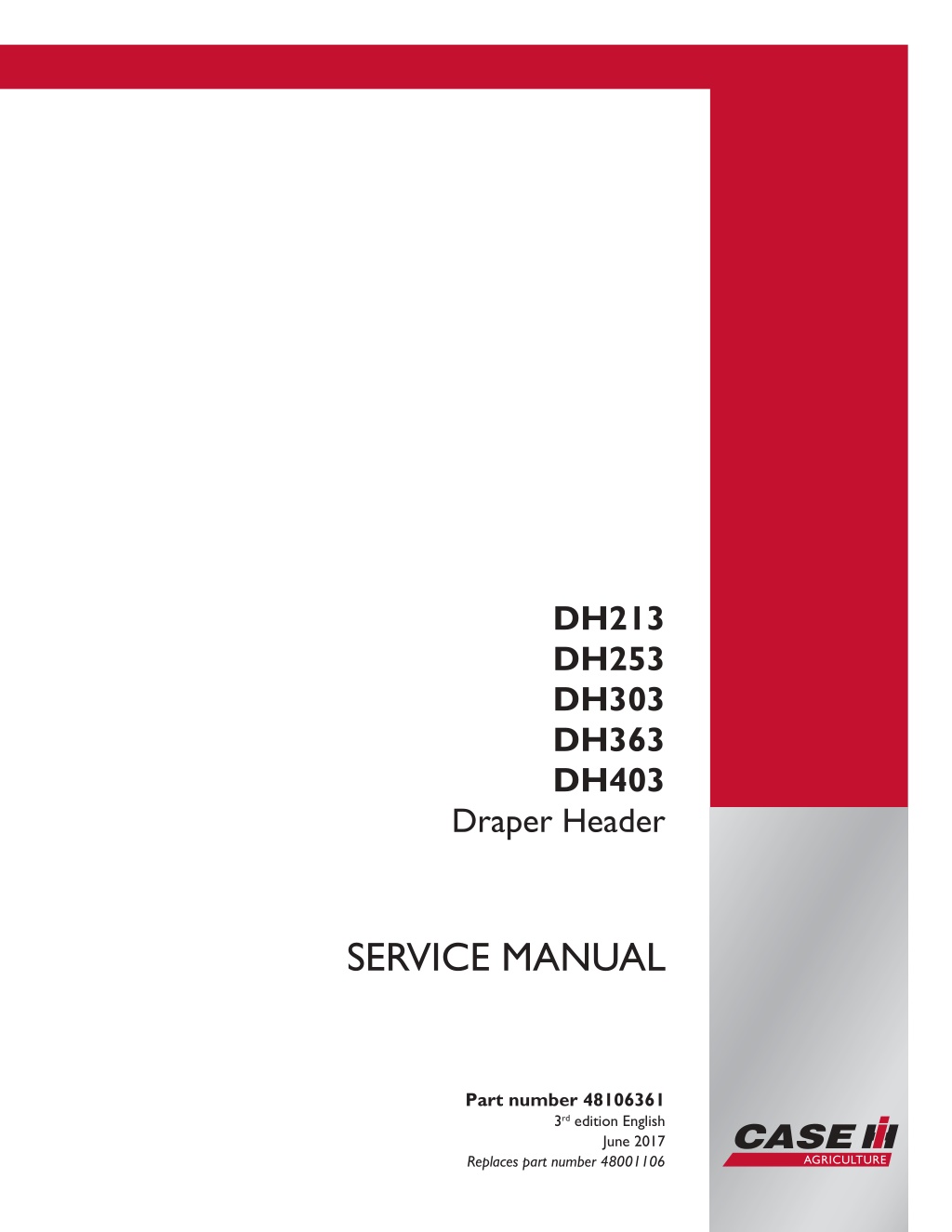
CASE IH DH213, DH253, DH303, DH363, DH403 Draper Header Service Repair Manual Instant Download (Part Number 48106361)
Please open the website below to get the complete manualnn//
Download Presentation

Please find below an Image/Link to download the presentation.
The content on the website is provided AS IS for your information and personal use only. It may not be sold, licensed, or shared on other websites without obtaining consent from the author. Download presentation by click this link. If you encounter any issues during the download, it is possible that the publisher has removed the file from their server.
E N D
Presentation Transcript
DH213 DH253 DH303 DH363 DH403 Draper Header SERVICE MANUAL Part number 48106361 3rd edition English Printed in U.S.A. 2017 CNH Industrial America LLC. All Rights Reserved. Case IH is a trademark registered in the United States and many other countries, owned or licensed to CNH Industrial N.V., June 2017 Replaces part number 48001106 its subsidiaries or affiliates.
SERVICE MANUAL DH213 DH253 DH303 DH363 DH403 48106361 15/06/2017 EN
Contents INTRODUCTION Hydraulic systems....................................................................... 35 [35.000] Hydraulic systems.................................................................. 35.1 [35.300] Reservoir, cooler, and filters........................................................ 35.2 [35.420] Reel vertical positioning system.................................................... 35.3 [35.430] Reel fore-and-aft positioning system............................................... 35.4 [35.518] Reel control system ................................................................ 35.5 [35.565] Cutter control circuit................................................................ 35.6 [35.780] Feeder engagement system ....................................................... 35.7 [35.910] Head and header hydraulic drive .................................................. 35.8 Frames and ballasting................................................................. 39 [39.110] Drawbar and hitch assembly ....................................................... 39.1 [39.180] Endwise transport system frame................................................... 39.2 Wheels...................................................................................... 44 [44.534] Endwise transport system wheels.................................................. 44.1 [44.536] Gauge wheels...................................................................... 44.2 Electrical systems....................................................................... 55 [55.000] Electrical system ................................................................... 55.1 [55.100] Harnesses and connectors......................................................... 55.2 [55.511] Light harnesses .................................................................... 55.3 [55.404] External lighting .................................................................... 55.4 [55.675] Reel speed and position control.................................................... 55.5 [55.421] Feeding control system ............................................................ 55.6 [55.820] Chopping and cutting control systems ............................................. 55.7 Attachments/Headers.................................................................. 58 [58.000] Cutting.............................................................................. 58.1 48106361 15/06/2017
https://www.ebooklibonline.com Hello dear friend! Thank you very much for reading. Enter the link into your browser. The full manual is available for immediate download. https://www.ebooklibonline.com
[58.101] Attachment/Header reel............................................................ 58.2 [58.105] Attachment/Header reel control system............................................ 58.3 [58.110] Attachment/Header cutting mechanism ............................................ 58.4 [58.130] Attachment/Header frame.......................................................... 58.5 [58.150] Cross-auger........................................................................ 58.6 [58.900] Belt feeding ........................................................................ 58.7 Platform, cab, bodywork, and decals............................................. 90 [90.105] Machine shields and guards ....................................................... 90.1 48106361 15/06/2017
INTRODUCTION 48106361 15/06/2017 1
Contents INTRODUCTION Foreword - Important notice regarding equipment servicing ....................................3 Safety rules .....................................................................................4 Safety rules - Personal safety ..................................................................5 Safety rules - Ecology and the environment .................................................. 11 Torque - Nominal tightening torques for normal assembly .................................... 12 Basic instructions - Shop and assembly ...................................................... 17 General specification ......................................................................... 19 Consumables ................................................................................. 21 Product identification .......................................................................... 22 Product identification - Machine orientation .................................................. 23 48106361 15/06/2017 2
INTRODUCTION Foreword - Important notice regarding equipment servicing All repair and maintenance work listed in this manual must be carried out only by qualified dealership personnel, strictly complying with the instructions given, and using, whenever possible, the special tools. Anyone who performs repair and maintenance operations without complying with the procedures provided herein shall be responsible for any subsequent damages. The manufacturer and all the organizations of its distribution chain, including - without limitation - national, regional, or local dealers, reject any responsibility for damages caused by parts and/or components not approved by the manu- facturer, including those used for the servicing or repair of the product manufactured or marketed by the manufacturer. In any case, no warranty is given or attributed on the product manufactured or marketed by the manufacturer in case of damages caused by parts and/or components not approved by the manufacturer. The manufacturer reserves the right to make improvements in design and changes in specifications at any time without notice and without incurring any obligation to install them on units previously sold. Specifications, descriptions, and illustrative material herein are as accurate as known at time of publication but are subject to change without notice. In case of questions, refer to your CASE IH Sales and Service Networks. 48106361 15/06/2017 3
INTRODUCTION Safety rules Personal safety This is the safety alert symbol. It is used to alert you to potential personal injury hazards. Obey all safety messages that follow this symbol to avoid possible death or injury. Throughout this manual you will find the signal words DANGER, WARNING, and CAUTION followed by special in- structions. These precautions are intended for the personal safety of you and those working with you. Read and understand all the safety messages in this manual before you operate or service the machine. DANGER indicates a hazardous situation that, if not avoided, will result in death or serious injury. WARNING indicates a hazardous situation that, if not avoided, could result in death or serious injury. CAUTION indicates a hazardous situation that, if not avoided, could result in minor or moderate injury. FAILURE TO FOLLOW DANGER, WARNING, AND CAUTION MESSAGES COULD RESULT IN DEATH OR SERIOUS INJURY. Machine safety NOTICE: Notice indicates a situation that, if not avoided, could result in machine or property damage. Throughout this manual you will find the signal word Notice followed by special instructions to prevent machine or property damage. The word Notice is used to address practices not related to personal safety. Information NOTE: Note indicates additional information that clarifies steps, procedures, or other information in this manual. Throughout this manual you will find the word Note followed by additional information about a step, procedure, or other information in the manual. The word Note is not intended to address personal safety or property damage. 48106361 15/06/2017 4
INTRODUCTION Safety rules - Personal safety General safety rules Use caution when you operate the machine on slopes. Raised equipment, full tanks and other loads will change the center of gravity of the machine. The machine can tip or roll over when near ditches and embankments or uneven surfaces. Never operate the machine under the influence of alcohol or drugs, or while you are otherwise impaired. Hydraulic oil or diesel fuel leaking under pressure can penetrate the skin, causing serious injury or infection. DO NOT use your hand to check for leaks. Use a piece of cardboard or paper. Stop the engine, remove the key, and relieve the pressure before you connect or disconnect fluid lines. Make sure that all components are in good condition. Tighten all connections before you start the engine or pres- surize the system. If hydraulic fluid or diesel fuel penetrates the skin, seek medical attention immediately. Continuous long term contact with hydraulic fluid may cause skin cancer. Avoid long term contact and wash the skin promptly with soap and water. Keep clear of moving parts. Loose clothing, jewelry, watches, long hair, and other loose or hanging items can become entangled in moving parts. Wear protective equipment when appropriate. DO NOT attempt to remove material from any part of the machine while it is being operated or while components are in motion. Make sure that all guards and shields are in good condition and properly installed before you operate the machine. Never operate the machine with shields removed. Always close access doors or panels before you operate the ma- chine. Dirty or slippery steps, ladders, walkways, and platforms can cause falls. Make sure these surfaces remain clean and clear of debris. A person or pet within the operating area of a machine can be struck or crushed by the machine or its equipment. DO NOT allow anyone to enter the work area. Raised equipment and/or loads can fall unexpectedly and crush persons underneath. Never allow anyone to enter the area underneath raised equipment during operation. 48106361 15/06/2017 5
INTRODUCTION Before you leave the machine: 1. Park the machine on a firm, level surface. 2. Put all controls in neutral or park lock position. 3. Engage the parking brake. Use wheel chocks if required. 4. Lower all hydraulic equipment Implements, header, etc. 5. Turn off the engine and remove the key. When, due to exceptional circumstances, you would decide to keep the engine running after you leave the operator s station, then you must follow these precautions: 1. Bring the engine to low idle speed. 2. Disengage all drive systems. WARNING Some components may continue to run down after you disengage drive systems. Make sure all drive systems are fully disengaged. Failure to comply could result in death or serious injury. 3. W0113A Shift the transmission into neutral. 4. Apply the parking brake. General maintenance safety Keep the area used for servicing the machine clean and dry. Clean up spilled fluids. Service the machine on a firm, level surface. Install guards and shields after you service the machine. Close all access doors and install all panels after servicing the machine. Do not attempt to clean, lubricate, clear obstructions, or make adjustments to the machine while it is in motion or while the engine is running. Always make sure that working area is clear of tools, parts, other persons and pets before you start operating the machine. Unsupported hydraulic cylinders can lose pressure and drop the equipment, causing a crushing hazard. Do not leave equipment in a raised position while parked or during service, unless the equipment is securely supported. Jack or lift the machine only at jack or lift points indicated in this manual. Stop the engine, remove the key, and relieve pressure before you connect or disconnect fluid lines. Stop the engine and remove the key before you connect or disconnect electrical connections. Replace damaged or worn tubes, hoses, electrical wiring, etc. The engine, transmission, exhaust components, and hydraulic lines may become hot during operation. Take care when you service such components. Allow surfaces to cool before you handle or disconnect hot components. Wear protective equipment when appropriate. When welding, follow the instructions in the manual. Always disconnect the battery before you weld on the machine. Always wash your hands after you handle battery components. Wheels and tires Make sure that tires are correctly inflated. Do not exceed any recommended load or pressure. Follow the instructions in the manual for proper tire inflation. 48106361 15/06/2017 6
INTRODUCTION Tires are heavy. Handling tires without proper equipment could cause death or serious injury. Never weld on a wheel with a tire installed. Always remove the tire completely from the wheel prior to welding. Always have a qualified tire technician service the tires and wheels. If a tire has lost all pressure, take the tire and wheel to a tire shop or your dealer for service. Explosive separation of the tire can cause serious injury. DO NOT weld to a wheel or rim until the tire is completely removed. Inflated tires can generate a gas mixture with the air that can be ignited by high temperatures from welding procedures performed on the wheel or rim. Removing the air or loosening the tire on the rim (breaking the bead) will NOT eliminate the hazard. This condition can exist whether tires are inflated or deflated. The tire MUST be completely removed from the wheel or rim prior to welding the wheel or rim. Driving on public roads and general transportation safety Comply with local laws and regulations. Use appropriate lighting to meet local regulations. Make sure that the SMV emblem is visible. Use safety chains for trailed equipment when safety chains are provided with machine or equipment. Lift implements and attachments high enough above ground to prevent accidental contact with road. When you transport equipment or a machine on a transport trailer, make sure that it is properly secured. Be sure the SMV on the equipment or machine is covered while being transported on a trailer. Be aware of overhead structures or power lines and make sure that the machine and/or attachments can pass safely under. Travel speed should be such that you maintain complete control and machine stability at all times. Slow down and signal before turning. Pull over to allow faster traffic to pass. Follow correct towing procedure for equipment with or without brakes. Fire and explosion prevention Fuel or oil that is leaked or spilled on hot surfaces or electrical components can cause a fire. Crop materials, trash, debris, bird nests, or flammable material can ignite on hot surfaces. Always have a fire extinguisher on or near the machine. Make sure that the fire extinguisher(s) is maintained and serviced according to the manufacturer s instructions. At least once each day and at the end of the day, remove all trash and debris from the machine especially around hot components such as the engine, transmission, exhaust, battery, etc. More frequent cleaning of your machine may be necessary depending on the operating environment and conditions. At least once each day, remove debris accumulation around moving components such as bearings, pulleys, belts, gears, cleaning fans, etc. More frequent cleaning of your machine may be necessary depending on the operating environment and conditions. Inspect the electrical system for loose connections and frayed insulation. Repair or replace loose or damaged parts. Do not store oily rags or other flammable material on the machine. Do not weld or flame cut any items that contain flammable material. Clean items thoroughly with non-flammable solvents before welding or flame-cutting. 48106361 15/06/2017 7
INTRODUCTION Do not expose the machine to flames, burning brush, or explosives. Promptly investigate any unusual smells or odors that may occur during operation of the machine. Reflectors and warning lights You must use flashing amber warning lights when you operate equipment on public roads. 48106361 15/06/2017 8
INTRODUCTION Personal Protective Equipment (PPE) Wear Personal Protective Equipment (PPE) such as hard hat, eye protection, heavy gloves, hearing protection, pro- tective clothing, etc. Do Not Operate tag Before you start servicing the machine, attach a Do Not Operate warning tag to the machine in an area that will be visible. Hazardous chemicals If you are exposed to or come in contact with hazardous chemicals you can be seriously injured. The fluids, lubricants, paints, adhesives, coolant, etc. required for the function of your machine can be hazardous. They may be attractive and harmful to domestic animals as well as humans. Material Safety Data Sheets (MSDS) provide information about the chemical substances within a product, safe han- dling and storage procedures, first aid measures, and procedures to take in the event of a spill or accidental release. MSDS are available from your dealer. Before you service your machine check the MSDS for each lubricant, fluid, etc. used in this machine. This information indicates the associated risks and will help you service the machine safely. Follow the information in the MSDS, and on manufacturer containers, as well as the information in this manual, when you service the machine. Dispose of all fluids, filters, and containers in an environmentally safe manner according to local laws and regulations. Check with local environmental and recycling centers or your dealer for correct disposal information. Store fluids and filters in accordance with local laws and regulations. Use only appropriate containers for the storage of chemicals or petrochemical substances. Keep out of reach or children or other unauthorized persons. Applied chemicals require additional precautions. Obtain complete information from the manufacturer or distributor of the chemicals before you use them. Utility safety Make sure that the machine has sufficient clearance to pass in all directions. Pay special attention to overhead power lines and hanging obstacles. High voltage lines may require significant clearance for safety. Contact local authorities or utilities to obtain safe clearance distances from high voltage power lines. Retract raised or extended components, if necessary. Remove or lower radio antennas or other accessories. Should a contact between the machine and an electric power source occur, the following precautions must be taken: Stop the machine movement immediately. Apply the parking brake, stop the engine, and remove the key. Check if you can safely leave the cab or your actual position without contact with electrical wires. If not, stay in your position and call for help. If you can leave your position without touching lines, jump clear of the machine to make sure that you do not make contact with the ground and the machine at the same time. Do not permit anyone to touch the machine until power has been shut off to the power lines. Electrical storm safety Do not operate machine during an electrical storm. If you are on the ground during an electrical storm, stay away from machinery and equipment. Seek shelter in a permanent, protected structure. If an electrical storm should strike during operation, remain in the cab. Do not leave the cab or operator s platform. Do not make contact with the ground or objects outside the machine. 48106361 15/06/2017 9
INTRODUCTION Working at heights When the normal use and maintenance of the machine requires you to work at heights: Correctly use installed steps, ladders, and railings. Never use ladders, steps, or railings while the machine is moving. Do not stand on surfaces that are not designated as steps or platforms. Do not use the machine as a lift, ladder, or platform for working at heights. 48106361 15/06/2017 10
INTRODUCTION Safety rules - Ecology and the environment Soil, air, and water quality is important for all industries and life in general. When legislation does not yet rule the treatment of some of the substances that advanced technology requires, sound judgment should govern the use and disposal of products of a chemical and petrochemical nature. Familiarize yourself with the relative legislation applicable to your country, and make sure that you understand this legislation. Where no legislation exists, obtain information from suppliers of oils, filters, batteries, fuels, anti-freeze, cleaning agents, etc., with regard to the effect of these substances on man and nature and how to safely store, use, and dispose of these substances. Helpful hints Avoid the use of cans or other inappropriate pressurized fuel delivery systems to fill tanks. Such delivery systems may cause considerable spillage. In general, avoid skin contact with all fuels, oils, acids, solvents, etc. Most of these products contain substances that may be harmful to your health. Modern oils contain additives. Do not burn contaminated fuels and or waste oils in ordinary heating systems. Avoid spillage when you drain fluids such as used engine coolant mixtures, engine oil, hydraulic fluid, brake fluid, etc. Do not mix drained brake fluids or fuels with lubricants. Store all drained fluids safely until you can dispose of the fluids in a proper way that complies with all local legislation and available resources. Do not allow coolant mixtures to get into the soil. Collect and dispose of coolant mixtures properly. The air-conditioning system contains gases that should not be released into the atmosphere. Consult an air-condi- tioning specialist or use a special extractor to recharge the system properly. Repair any leaks or defects in the engine cooling system or hydraulic system immediately. Do not increase the pressure in a pressurized circuit as this may lead to a component failure. Protect hoses during welding. Penetrating weld splatter may burn a hole or weaken hoses, allowing the loss of oils, coolant, etc. Battery recycling Batteries and electric accumulators contain several substances that can have a harmful effect on the environment if the batteries are not properly recycled after use. Improper disposal of batteries can contaminate the soil, groundwater, and waterways. CASE IH strongly recommends that you return all used batteries to a CASE IH dealer, who will dispose of the used batteries or recycle the used batteries properly. In some countries, this is a legal requirement. Mandatory battery recycling NOTE: The following requirements are mandatory in Brazil. Batteries are made of lead plates and a sulfuric acid solution. Because batteries contain heavy metals such as lead, CONAMA Resolution 401/2008 requires you to return all used batteries to the battery dealer when you replace any batteries. Do not dispose of batteries in your household garbage. Points of sale are obliged to: Accept the return of your used batteries Store the returned batteries in a suitable location Send the returned batteries to the battery manufacturer for recycling 48106361 15/06/2017 11
INTRODUCTION Torque - Nominal tightening torques for normal assembly NOTE: In the metric tables, nominal sizes M4 through M8 hardware torque specifications are shown as a Newton meters (pound-inches) numerical value. Nominal sizes M10 through M24 hardware torque specifications are shown as a Newton meters (pound-feet) numer- ical value. Metric hex head (non-flange) hardware Plain (PLN) an unplated hardware finish with residual manufacturing oils Zinc-dichromate (ZND) a yellow colored chemical plating formula yellow applied to the hardware Class (CL) 8.8 bolt and Class (CL) 8 nut PLN and ZND N m (lb in) 3.5 (31) 7.0 (62) 11.8 (104) 28.8 (255) N m (lb ft) 57 (42) 100 (74) 159 (117) 248 (183) 352 (260) 500 (369) 865 (638) Class (CL) 10.9 bolt and Class (CL) 10 nut PLN and ZND N m (lb in) 5.0 (44) 10 (88) 17 (150) 41.3 (366) N m (lb ft) 82 (60) 143 (105) 227 (168) 354 (261) 487 (359) 690 (509) 1195 (882) Locknut CL 8 w/CL 8.8 bolt ZND N m (lb in) 1.4 (13) 2.9 (26) 4.9 (43) 11.9 (105) N m (lb ft) 24 (17) 41 (30) 66 (48) 102 (75) 145 (107) 206 (152) 357 (263) Locknut CL 10 w/CL 10.9 bolt ZND N m (lb in) 2.8 (25) 5.5 (49) 9.4 (83) 23 (204) N m (lb ft) 45 (33) 79 (38) 125 (92) 195 (144) 268 (198) 380 (280) 657 (485) Nominal size M4 M5 M6 M8 M10 M12 M14 M16 M18 M20 M24 Metric flange head hardware Plain (PLN) an unplated hardware finish with residual manufacturing oils Zinc-dichromate (ZND) a yellow colored chemical plating formula yellow applied to the hardware Class (CL) 8.8 bolt and Class (CL) 8 nut PLN and ZND N m (lb in) 3.8 (34) 7.7 (68) 13 (115) 31.7 (281) N m (lb ft) 63 (47) 110 (81) 175 (129) 272 (201) 387 (286) 550 (406) 951 (702) Class (CL) 10.9 bolt and Class (CL) 10 nut PLN and ZND N m (lb in) 5.5 (49) 11 (97) 18.7 (166) 45.5 (403) N m (lb ft) 90 (66) 157 (116) 250 (184) 389 (287) 535 (395) 759 (560) 1315 (970) Flange locknut CL 8 w/CL 8.8 bolt ZND N m (lb in) 4.2 (37) 8.5 (75) 14.3 (127) 35 (310) N m (lb ft) 69 (51) 121 (89) 193 (142) 299 (221) 426 (315) 605 (447) 1046 (772) Flange locknut CL 10 w/CL 10.9 bolt ZND N m (lb in) 6.1 (54) 12 (106) 20.6 (182) 50 (443) N m (lb ft) 99 (73) 173 (128) 275 (202) 428 (316) 589 (435) 835 (616) 1447 (1067) Nominal size M4 M5 M6 M8 M10 M12 M14 M16 M18 M20 M24 48106361 15/06/2017 12
INTRODUCTION Identification markings Metric hex head, flange hex head and carriage bolts, Classes (CL) 5.6 and upward 1 NHIL14RB00662AA Metric bolt identification markings 1. Manufacturer's identification 2. Property class Metric hex nuts and locknuts, Classes (CL) 05 and upward 2 NHIL14RB00663AA Metric hex nut identification markings (1) Manufacturer's identification (3) Property class (2) Clockwise type markings indicate property class and may include manufacturer identification (if applied), Example: property marks 240 apart (shown) at the eight o clock position indicate a Class 8 property, and marks 300 apart at the ten o clock position indicate a Class 10 property. 48106361 15/06/2017 13
INTRODUCTION NOTE: In the Imperial units tables, the nominal sizes, 1/4 (0.25) in (inch) and 5/16 (0.3125) in (inch) hardware torque specifications are shown as a Newton meters (pound-inches) numerical value. Nominal sizes 3/8 (0.375) in (inch) through 1 (1.0) in (inch) hardware torque specifications are shown as a Newton meters (pound-feet) numerical value. Inch hex head (non-flange) hardware Plain (PLN) an unplated hardware finish with residual manufacturing oils Zinc-dichromate (ZND) a yellow colored chemical plating formula yellow applied to the hardware Locknut GR B w/ GR 5 bolt ZND N m (lb in) 7.2 (64) 14.9 (132) N m (lb ft) 26 (19) 42 (31) 64 (47) 92 (68) 127 (94) 226 (166) 363 (267) 544 (401) Locknut GR C w/ GR 8 bolt ZND N m (lb in) 10 (89) 21 (186) N m (lb ft) 37 (27) 59 (44) 90 (67) 130 (96) 179 (132) 318 (234) 512 (378) 768 (567) SAE Grade (GR) 5 bolt and nut PLN and ZND N m (lb in) 13 (115) 27 (239) N m (lb ft) 47 (35) 76 (56) 116 (85) 167 (123) 231 (170) 410 (302) 660 (486) 989 (729) SAE Grade (GR) 8 bolt and nut PLN and ZND N m (lb in) 18 (159) 38 (336) N m (lb ft) 67 (49) 107 (79) 164 (121) 236 (174) 326 (240) 578 (426) 931 (687) 1396 (1030) Nominal size 1/4 (0.25) in 5/16 (0.3125) in 3/8 (0.375) in 7/16 (0.4375) in 1/2 (0.50) in 9/16 (0.5625) in 5/8 (0.625) in 3/4 (0.75) in 7/8 (0.875) in 1 (1.0) in Inch flange head hardware Plain (PLN) an unplated hardware finish with residual manufacturing oils Zinc-dichromate (ZND) a yellow colored chemical plating formula yellow applied to the hardware Flange locknut GR F w/ GR 5 bolt ZND N m (lb in) 15.4 (136) 32 (283) N m (lb ft) 57 (42) 92 (68) 140 (103) 202 (150) 279 (206) 495 (365) 798 (589) 1197 (882) Flange locknut GR G w/ GR 8 bolt ZND N m (lb in) 22 (195) 46 (407) N m (lb ft) 81 (9) 130 (96) 198 (146) 285 (210) 394 (290) 700 (516) 1126 (831) 1690 (1246) SAE Grade (GR) 5 bolt and nut PLN and ZND N m (lb in) 14 (124) 29 (257) N m (lb ft) 52 (38) 84 (62) 127 (94) 184 (136) 254 (187) 450 (332) 725 (535) 1088 (802) SAE Grade (GR) 8 bolt and nut PLN and ZND N m (lb in) 20 (177) 42 (372) N m (lb ft) 74 (54) 118 (87) 180 (133) 259 (191) 358 (264) 636 (469) 1024 (755) 1536 (1133) Nominal size 1/4 (0.25) in 5/16 (0.3125) in 3/8 (0.375) in 7/16 (0.4375) in 1/2 (0.50) in 9/16 (0.5625) in 5/8 (0.625) in 3/4 (0.75) in 7/8 (0.875) in 1 (1.0) in 48106361 15/06/2017 14
Suggest: For more complete manuals. Please go to the home page. https://www.ebooklibonline.com If the above button click is invalid. Please download this document first, and then click the above link to download the complete manual. Thank you so much for reading
INTRODUCTION Identification marking Grades of inch bolts and free-spinning nuts SAE (J995) bolt head and nut grade identification Grade Grade identification marking Marking description Grade 2 No line marks Grade 5 Three line marks Grade 8 Six line marks Grade 2 No circumferential line marks Grade 5 Two circumferential line marks located 120 apart Grade 2 Two circumferential line marks located 60 apart Grade 2 No circumferential line marks Grade 5 Two circumferential line marks located 120 apart Grade 8 Two circumferential line marks located 60 apart 48106361 15/06/2017 15
INTRODUCTION Grades of inch prevailing torque locknuts, all metal (three common marking methods) On prevailing torque locknuts, the grade of nut is identified by one of three different sets of markings that denote the strength level and manufacturer. Common prevailing torque locknut grade identification markings Grade Grade identification marking Marking description Grade A No marks Grade B (hex nut) and Grade F (flange nut) Three raised or indented dot marks (Marks do not have to be in corners.) Grade C (hex nut) and Grade F (flange nut) Six raised or indented dot marks (Marks do not have to be in corners.) Grade A No letter mark on side flat Grade B Letter B on side flat Grade C Letter C on side flat Grade A No notches Grade B One circumferential notch on all six corners Grade C Two circumferential notches on all six corners 48106361 15/06/2017 16
https://www.ebooklibonline.com Hello dear friend! Thank you very much for reading. Enter the link into your browser. The full manual is available for immediate download. https://www.ebooklibonline.com

